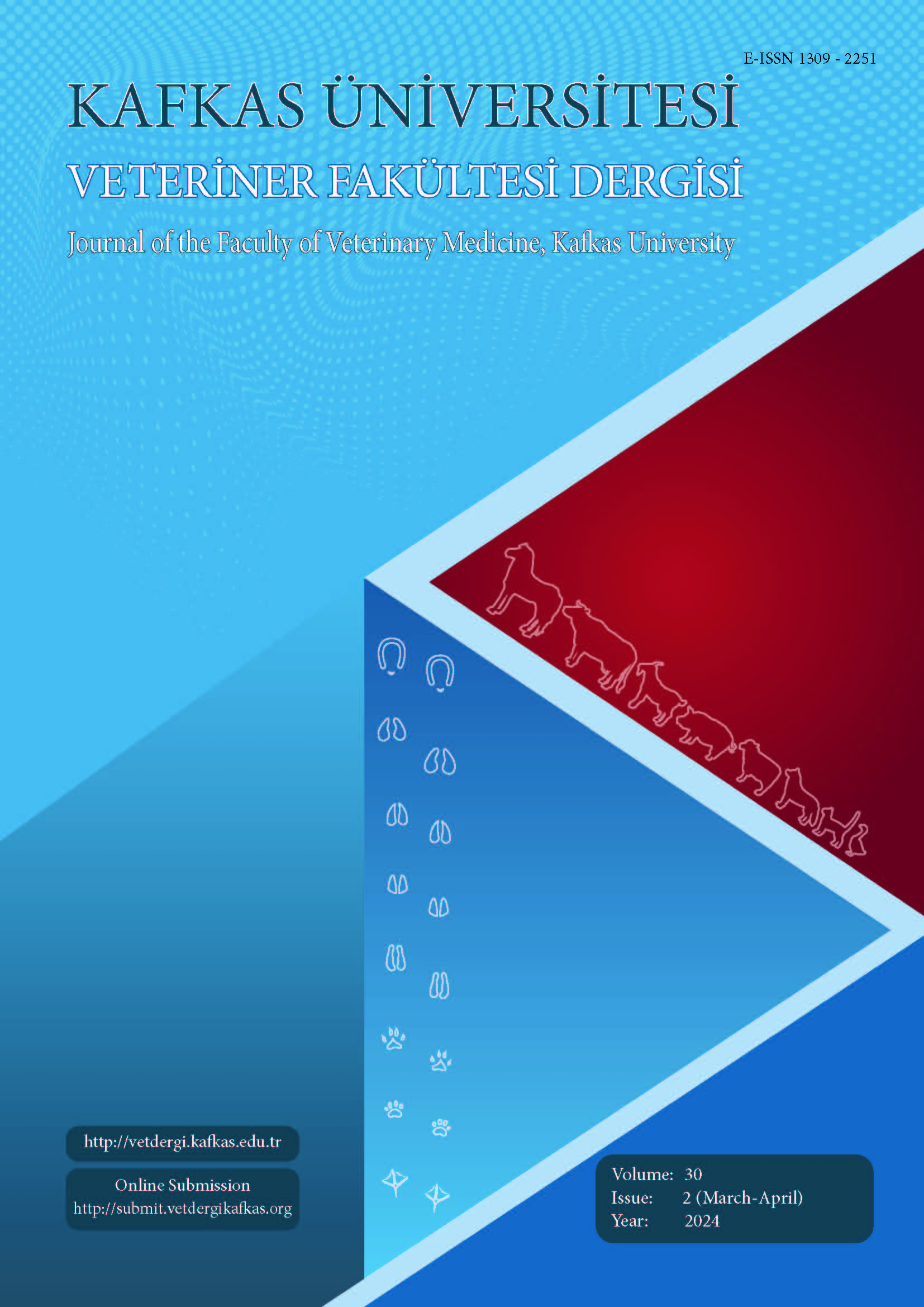
This journal is licensed under a Creative Commons Attribution-NonCommercial 4.0 International License
Kafkas Üniversitesi Veteriner Fakültesi Dergisi
2024 , Vol 30 , Issue 2
Antimicrobial Resistance of Escherichia coli Involved in Algerian Bovine Carriage, ESBL Detection, Integron Characterization and Genetic Lineages
1Saad DAHLAB University Blida1, Institute of Veterinary Sciences, Blida, ALGERIA2Saad DAHLAB University Blida1, Laboratory of Biotechnology Related to Animals Reproduction, Blida, ALGERIA
3Universidad de La Rioja, Area Bioquímica y Biología Molecular, Logroño, SPAIN
4Center of Research in Agropastoralism, Djelfa, ALGERIA DOI : 10.9775/kvfd.2023.30670 This study aimed to characterize the fecal carriage of antimicrobial-resistant Escherichia coli isolates in healthy bovine in Northern Algeria. Fecal samples of 233 cows were collected and cultured on MacConkey agar. E. coli isolates were recovered, identified and tested for antibiotic susceptibility by disk diffusion method. Screening of extendedspectrum- betalactamase (ESBL)-production was performed by double-disk synergy test and characterization of ESBL genes by PCR and sequencing. All isolates were typed for phylogenetic groups and multilocus-sequence-typing (MLST) analysis was performed on phylogroup B2 and ESBL-producing isolates. The presence of antimicrobial resistant genes was analyzed in the collection of E. coli isolates and integrons in SXT-resistant isolates. Overall, 39.9% of E. coli isolates (89/223) were resistant to at least one antimicrobial agent, and 41.5% of them showed multi-drug resistance (MDR). High resistance rates were detected for tetracycline (32.3%), streptomycin (18.4%), sulphamethoxazole/ trimethoprim (15.7%) and ampicillin (15.2%). Two ESBL-producing E. coli isolates were identified: A/ST617/CTX-M-15 and A/ST48/SHV-12. Sequence types ST95, ST998 and ST145 were detected among the phylogroup B2 isolates. From 35 SXTR isolates, class-1 and class-2 integrons were detected in 82.9% (29/35) and 12.9% (1/35), respectively. Six gene-cassette-array structures were detected in the variable region of class-1 (dfrA1- aadA; dfrA12-aadA2, aadA1/2; dfrA12-orfF-aadA2-cml-sul3-linked and dfrA17-aadA5) and class-2 integrons (dfrA1-sat2-aadA1). Our study highlights the potential dynamics of animal E. coli isolates in farms. Keywords : Antimicrobial resistance, bovine, E. coli, Integrons, MLST, Phylogenetics










